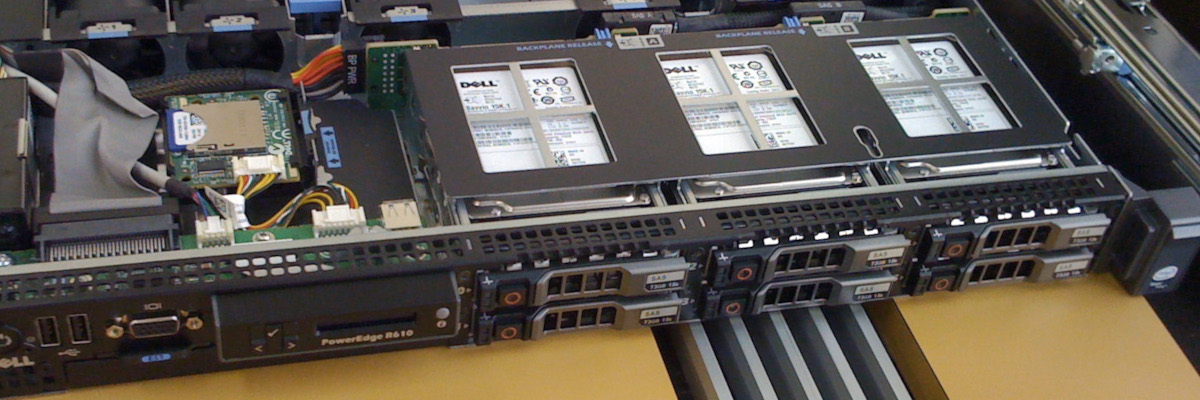As I looked into the challenges for 2025, including a lot of personal economic anxiety, I wrote two political pieces: “Entering the Dark Forest” right after the 2024 election, and “Inside the Dark Forest” in August 2025, after seeing how things have been working out. These make it clear that I need to be diversifying how I’m making income from this project and related activities.
Can we break-even? Or profit? It’s a tough question.
In considering it, I also want to consider what sort of services and goods we might sell that have some connection to the work I’m already committed to, so that it’s not an overwhelming new project. I’m trying to explore a concrete, practical solutions.
What follows is sort of the outline of a new plan for 2025, including the rough shape of a business plan, and some ambitions beyond that. My major goals here are:
- Eliminate platform dependency (even more) for Lunatics Project / Film Freedom
- (Re-)establish better community ties
- Provide community resources for creators
- Earn revenue to support the project, make it sustainable, and pay me for my labor (maybe)
- Possibly create a few additional jobs in the long run
To do this, I hope to combine several of my existing, stalled, and never-yet-started project ambitions in what I hope will be a synergistic way.
Sunk Costs
First of all, I think it’s important to address the investments and ongoing expenses that I will be engaging in purely to maintain Lunatics Project. These are not properly accounted as investments in the new business plan, and don’t affect its costs, because I will have to do them anyway in order to keep my own project running. The only difference is that, if they are not being used to make money, then these are costs coming out of my pocket.
As an enterprise, this is a very tiny trickle of money. As a personal hobby, however, it’s pretty pricey.
Present Expenses
My annual reports show an expense of about $2500 to $3500 per year. Or about $200 to $300 a month.
These are actual out-of-pocket expenses, NOT including the labor I have to put in, which is considerable (at market IT salary rates, assuming this is only a quarter of my time, it still raises the expenses by an order of magnitude: to $25,000 – $35,000/year). And this is specifically IT labor, not directing or producing.
This labor cost is not something I pay or normally account for my own business reports, but it’s very important for planning, especially if I need to scale up.
Most of that for 2019-2024 has been various rents:
- Domain Name Registrations (Rose Hosting, Name.com)
- Cloud-Based Server Hosting (Digital Ocean, Rose Hosting)
- Remote Object Storage (Amazon Web Services S3, Backblaze B2)
And then there are commodity computing repairs, maintenance, and replacements:
- LAN Fileserver (“Giles”)
- Production Workstations (“Sintel”, “Sherlock”)
- Rendering Server (“Narya” – Dell Poweredge R720)
And there are supplies and printing costs associated with any physical projects we’re doing.
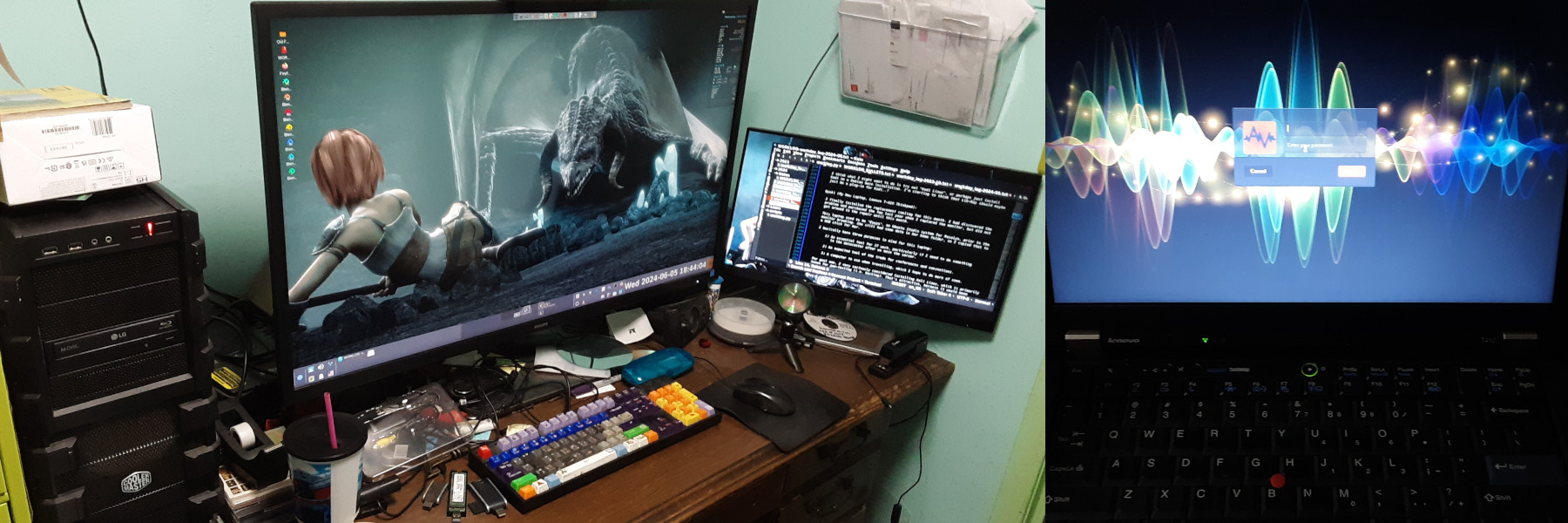
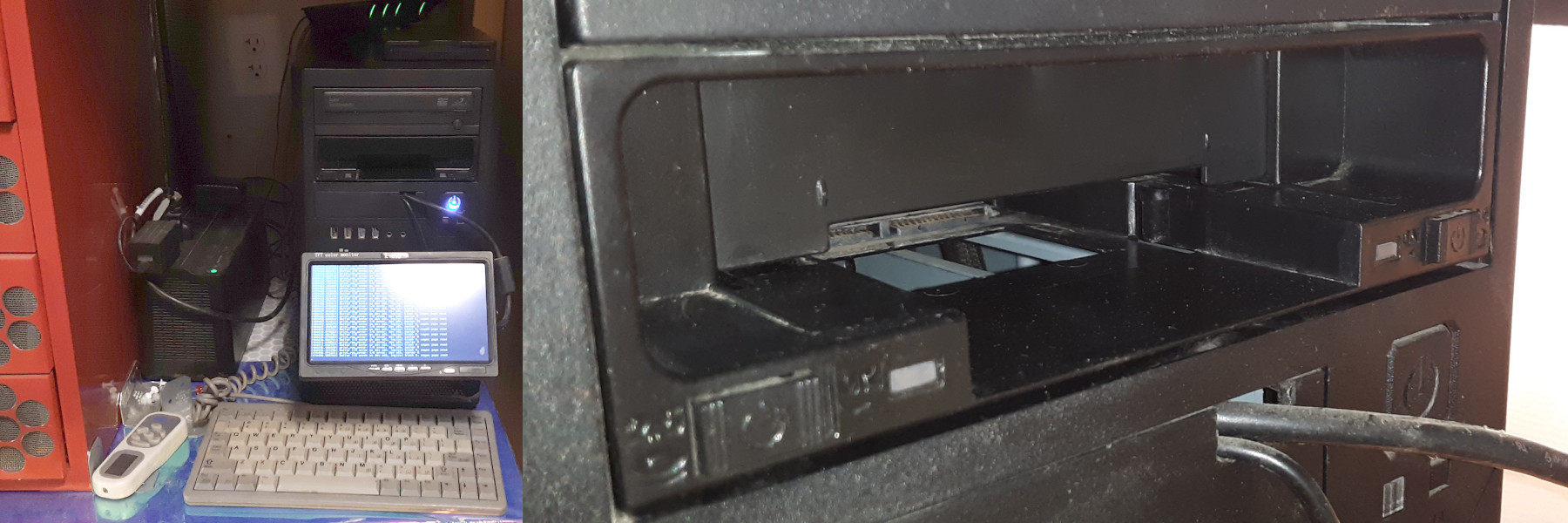
There are also some personal expenses which we’d probably be paying for whether I were running these projects or not, such as our “broadband” internet connection (scare-quotes, because I’m not sure 12 mbps counts as “broadband” anymore — it did when we first got it).
Off-the-Shelf Studio Software Solutions
I originally thought that my primary problem was with the software, and that was largely limited by my IT experience. I went through several attempts to use existing software, largely constrained by my software experience (I tried Zope, Plone, WordPress, Subversion, Trac, ResourceSpace, and Tactic, between the late 2000s and 2021). I had imagined that a major part of my project would be to develop a “virtual studio” software solution based on one of these platforms.
However, in 2021, after making very little headway, despite enormous effort, with TACTIC, I decided that this approach was a dead-end. I also “moved my flag” from proprietary social media (mainly Facebook and Tumblr) to the Fediverse (mainly Mastodon). I had been dabbling with federated social media prior to that, notably with Diaspora, but hadn’t committed to it yet. Now in 2021, I had.
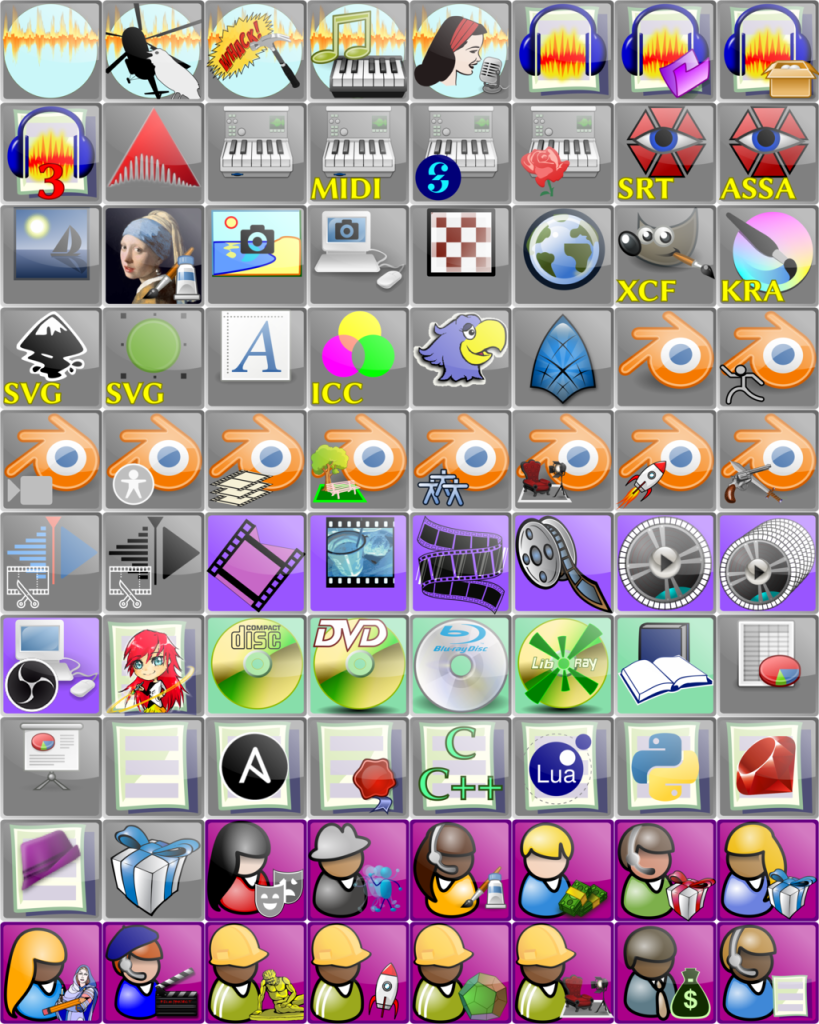
I also began to learn about other Fediverse platforms, including PeerTube, which was particularly interesting to me, because finding a good platform for hosting my videos had been a sore spot for a long time. Advertising and content-filtering bots were a major irritation with using YouTube, and while Vimeo was an improvement, it still wasn’t using a truly free platform.
And about that time, I started looking for better, more-independent, but also manageable solutions for hosting the “virtual studio” tools I needed for Lunatics Project.
In 2022, I discovered YunoHost, which is a Linux distribution specifically targeted at self-hosting. It tries to make setting up a server as simple as selecting packages, and provides a through-the-web GUI for managing your server. It’s much like the user-friendly desktop distributions of Linux, with well-defined package systems.
It’s far from perfect, but it makes it feasible for a smaller operator like me to set up a more complex set of web services, and in 2022 and 2023, I tested a wide range of the available options, ultimately coming up with the present configuration:
- WordPress / lunaticsproject.org (same as before: CMS & Blog)
- Nextcloud / studio.filmfreedom.net (file sharing, production sources, collaboration, and other office features)
- Gitea / src.filmfreedom.net (software source trees)
- PeerTube / tv.filmfreedom.net (federated video sharing platform)
- Pixelfed / px.filmfreedom.net (federated image sharing site for project)
- Misskey / m.filmfreedom.net (professional federated social microblogging and promotion)
The ones that are currently online are linked, the others have been shut down due to technical problems.
I originally tried to adapt Gitea to handle Lunatics production sources as well as software, but this ultimately turned out to be a poor fit. Simply storing the files in Nextcloud, with snapshot backups rather than formal version control appears to be a better solution for creative projects. Gitea remains useful for software repositories, where users can be expected to know Git (probably much better than I do myself). It should be noted, however, that Forgejo is a fork of Gitea that is more community focused. I will probably switch to that.

Upgrades Entailed for Lunatics Project
All of this is still NOT QUITE ADEQUATE for running Lunatics Project or Film Freedom..
Current Setup (Inadequate!)
Due to the cloud engineering we have to set up to host the large source trees for Lunatics, the only way we can manage is with object storage. And object storage introduces a lot of latency. Synchronizing our source tree with a local copy — whether using Subversion, Git, or Nextcloud — took the better part of a day. This is completely unreasonable to expect a project contributor to tolerate.
This wasn’t mostly because of the version control system, but because the “disk” the source tree was on is actually a virtual FUSE filesystem, backed by Backblaze object storage. Nextcloud helps a little, because you can more easily avoid downloading the entire tree. But it doesn’t help enough.
Party because of this and partly because of the complexity of maintaining the cloud-based engineering behind it, I shut down the Nextcloud app on the cloud server. Which unfortunately means the project isn’t truly “open source” anymore, since the production sources are no longer accessible on the server. I’ve considered doing some kind of intermediate solution, like providing direct download links to the S3 production backups, but have not found time to work on it. Originally, I thought this would be a temporary inconvenience — but it’s been more than a year now.
The PeerTube instance works surprisingly well on the cloud server under normal conditions, but I have had to permanently scale up the “droplet” Virtual Private Server (VPS) to accommodate the disk space, CPU, and RAM requirements. This has raised the hosting costs on Digital Ocean to just under $100/month.
In short, I’m already “hitting the wall” with cloud-based solutions. To scale up using the cloud, would quickly run my costs up, while still being very clunky and unresponsive.
So, since early 2023, my plan has been to abandon the cloud-based approach and move “closer to the metal” with a dedicated server, co-located in a datacenter. Because, the storage problem that has proved so difficult to resolve with cloud solution can be solved by simply buying a big hard drive and installing it in the server — just like I do for the workstation in my office.
I did the math on the costs for running the site on a co-located server, based on a quote I was able to get for 5U of “retail co-location” in a commercial data center in Dallas, and the result was that it would cost about the same ($100/month), but vastly improve performance: over 30X the disk storage (and that can be expanded a lot), over 10X the CPU cores, and 10X the RAM. There are small trades: the risk of down time will be higher, and it will be up to me to resolve it.
More recently, I inquired about colocating with my current ISP, much closer to home. This is cheaper (about $50/month), although the bandwidth won’t be as high, and I have recently discovered that my ISP is doing some country-level Geo-blocking, which is concerning. Nevertheless, the cost is a big factor, so I may start with this.
Static Cloud Server
We would not entirely abandon the cloud-based server, because it has two major advantages:
- Very good uptime (> 99%)
- Managed by professional IT staff
Combined, these mean that the cloud-based sites will stay online, even when I am having technical difficulties with virtual studio software. The dynamic virtual studio web applications are complex, finicky software, which frequently need updating and maintenance, and can have weird things go wrong with them. Furthermore, I am not primarily an IT professional, and I often have a lot of trouble sorting out what’s wrong with the software when it fails. So if I rely on my own management of a self-hosted server, I expected lower uptime — perhaps a day or two per month, on average.
This is okay for project software of interest to collaborators, provided I have a place I can post updates and provided there is a more stable project “landing page” available. These small static services, fortunately, are very cheap to run on the cloud: I’m currently running them on a $4/month VPS from Digital Ocean. I separated them from the larger VPS running the dynamic software a few months ago. This is where the lunatics.tv site lives now.
The biggest problem with this site is simply that I have not maintained the software as I would like. I developed “LunaGen” as a custom site generator for Lunatics Project, but it’s not in a good state. I will need to spend at least a month getting it back in shape. I started a “refactor” to separate the site-specific stuff from the program, and sort of got bogged down and then deflected into other priorities. So there’s clean-up to do there! (A very familiar pattern, I’m afraid).
This is still tabled, while I finish production work on our pilot episode.
Dynamic Server for Co-Location
However, the plan (since 2023) has been to move the dynamic stuff to a hardware server I own. I have had this server set up in my office for about a year, now. I wrote up the approximate configuration for this a year ago. With only minor changes, I now plan to set this server up with:
- WordPress (unchanged)
- Nextcloud (with much more storage, setup mostly as a local “External Storage” volume)
- Forgejo (a fork of Gitea, with a deeper FOSS commitment and federation plans)
- PeerTube (unchanged)
- Pixelfed (unchanged)
- Iceshrimp (fork of Calckey/Firefish fork of Misskey)
- Friendica (new – Facebook-like federated social macroblog)
- Misskey (legacy – will phase out)
The links above go to the Yunohost “App” pages for each, which in turn link to upstream sites. All of these are free-software packages.
This software will actually run on in a YunoHost O/S running in a virtual machine, managed by Proxmox VE, on a Debian host system. I may run additional software in another VM or a container on the same Proxmox host.
The hardware features:
Dell Poweredge R420 server (an older 1U rackmount server)
DVD-ROM drive for O/S installs
8 GB USB SSD boot volume
100 GB PCIE NVME SSD for web sites
8 TB HDD for project data storage
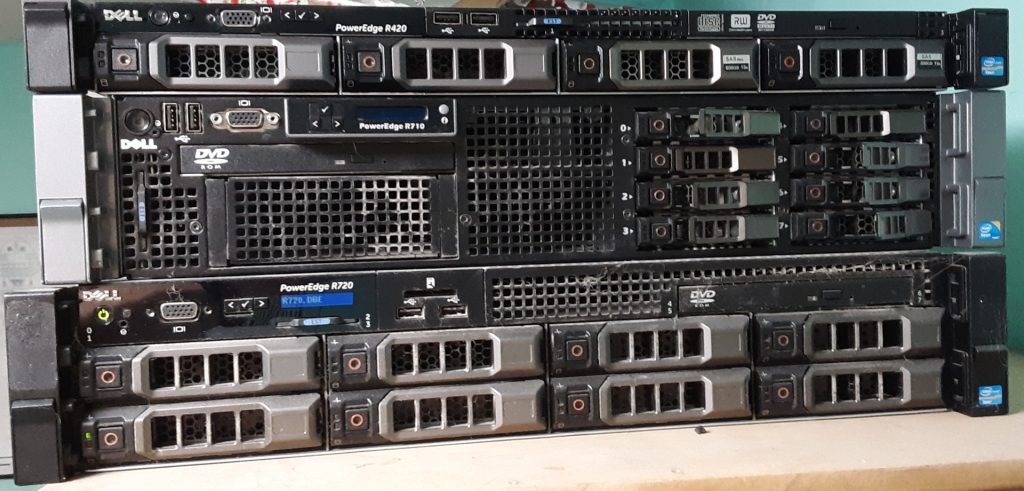
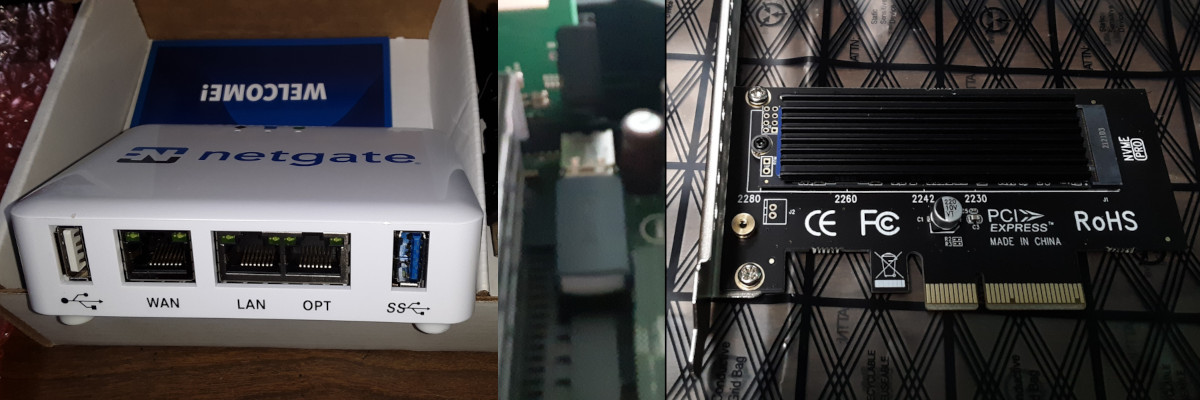
This only uses one of the eight drive bays on the server, and there are additional PCI slots. The machine’s BIOS doesn’t support booting from an NVME drive, which is
Revenue Sources
Current (2025)
Turning to the income side of the equation, current sources of revenue are pretty limited:
- Patreon on a monthly basis (currently $29/month)
- Liberapay on a weekly continuing basis (currently at $0/week)
- Ko-fi on a monthly subscription basis, plus one-off donations (currently $0 and $0/month)
I had setup Gumroad as a storefront, but as of 2025, Gumroad no longer supports selling physical products. That’s a pretty serious problem, since merch sales were the major source of income I had planned for.
This makes it a priority to add a self-hosted store front to my plans. YunoHost gives me two direct options, plus there is Woo Commerce for WordPress and I believe LibreERP (“Odoo”) also has a storefront plugin. I will most likely go for the independent Abantecart YunoHost app, but I will probably test more than one option.
Post-Release (2025)
I have a long list of missed deadlines that I’ve carelessly set on this project. It’s very hard to predict how long it will take you to do something you’ve never done before. And, on top of that, I’m not really free to only work on Lunatics Project. I also have critical home improvement projects I have to finish, particularly with the school year coming up, and I lost the first two weeks of August to CoViD (I’m still recovering, and everything I hear suggests I should expect this to take awhile).
However, based on what’s remaining to do, I currently estimate anywhere from 3 to 6 weeks of work remaining to have a finished episode in hand. So I think it’s pretty definite that it’s coming out this year.
Then what?
Well, I’ll have to do some promotion and advertising. I’ll try to get into some film festivals. I’ll probably arrange a local showing in a small venue. And I will master a DVD, which I’ll send off for a minimal press run — probably 1000 units (This is an easy number to write, but it’s a LOT of disks: a 100-pack of shrink-wrapped DVDs is perhaps 1 ft (30cm) tall, and this is 10 of those). Beyond this, I’ve written about plans for a Limited Edition Disk Release.
So, we’ll have some things to sell in our self-hosted online storefront. We might also list some via other distributors, if I can find opportunities for that. And we’ll have some of the physical merch available to sell at science fiction, anime, or animation convention events.
- DVD Release Pre-Sales
- Download Package Pre-Sales
- DVD Release Sales
- Download Package Sales
- Limited Edition Print/Certificate Sales
- Poster Sales
- Other Merch Sales
It’s unlikely these will bring us to break-even on episode one, if we consider all the fixed costs that have accumulated from floating the project since 2012. That’s some $25,000 – $30,000, just because it has gone on for so long. All those hosting fees add up. And only 20% of the revenue will go towards offsetting that (the fixed overhead). The rest will be divided among contributing artists, as described previously. Basically, this is going to be a symbolic act. But the more sales we make, the better a signal it will send as to the viability of the project going forward.
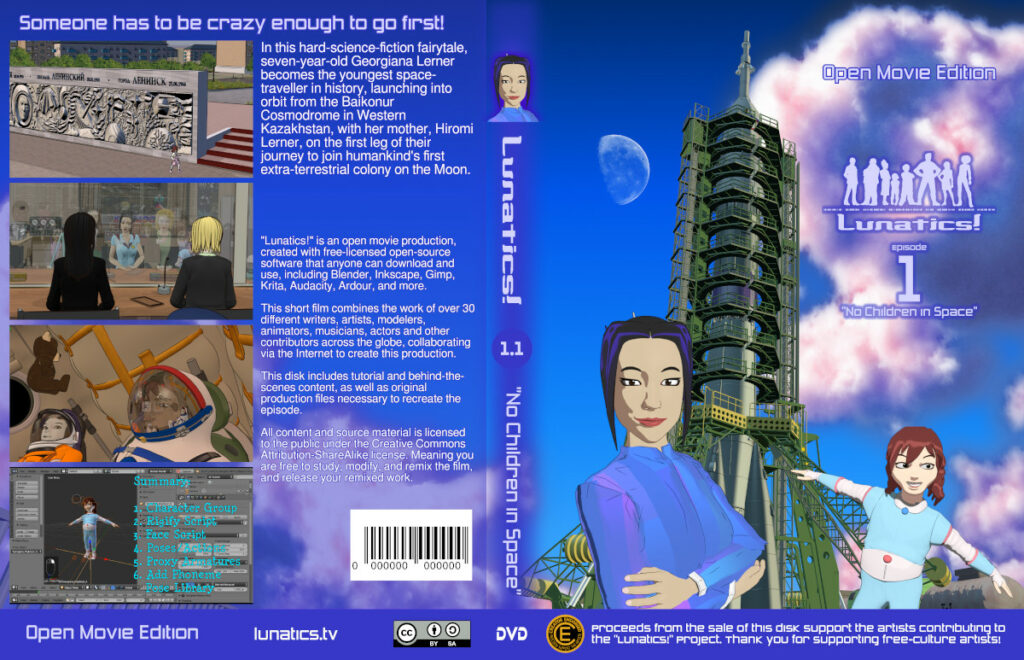
Some Grim Math
The reason this matters so much is not so much because I personally need the money. I’m already expecting to eat the $25,000 loss from the long run of hosting expenses, although I do have some worry that future personal expenses might force me to shut it down. That depends on economic forces I can’t control.
The real reason is because if Lunatics Project is to be in any way sustainable, it has to make enough to pay contributors for their time. You can run a one-time fun project on the goodwill of a few contributors, but the whole concept here was to do a series, which requires ongoing effort, and that’s not something you can really do with pure volunteer labor. You get burnout. People walk. It’s very unstable. And artists should be paid for their work. Character animation in particular is very demanding and delicate work that really calls for a pro (or several pros, really). In other words, the real question is “What does the NEXT episode costs? And the one after that?”
And it should be noted that after 13 years of work, that’s pretty much already happened. I’ve lost contact with many if not most of the contributors. Not all of the partings were entirely amicable (for various reasons). I’m going to try to reconnect, but I don’t know how well that’s going to go.
I’ve made various estimates, and it’s possible to keep things really cheap, the way we do it. But the sustainable cost of an episode is definitely at least $25,000, if the artists are getting compensated. And $50K/episode would be better.
Just to put that in perspective: if I made $10/episode on DVDs/Packages sold (meaning a price more like $15), I would need to sell at least 2500 copies to sustain production. We currently have 23 people following the Patreon. I have about 1,600 followers on the Fediverse, total. I never had substantial followers on Facebook, Tumblr, and Twitter, and I’ve shut down any effort on those platforms. This presents a considerable marketing problem!
I’m not saying it can’t be done. But I do think maybe I personally can’t do it. As a producer, I’ve been good at finding shoe-string ways to get production done, but I have not done well at all at paying for the shoe-strings.
Right now, I have audio dialog recorded for four episodes (from 2012!). And I have 3D model character, prop, and set assets nearly complete for two episodes. After that, we get into considerable asset development again for episodes 3 & 4 (because that’s the moon colony setting, which is largely incomplete). To get to episode 5, we need to start a team project back up again — probably with new people, because 13 years has been a long wait, and confidence will have faded even from the most loyal contributors. People move on with their lives. I suspect that, with this track record, more up-front money will be involved if I want to go forward.
Now, I don’t actually care if the money all comes from selling DVDs. If there’s other ways to get the money, I’m willing to pursue them. But since production is a substantial investment of time, money, and effort, any extra required to pursue the cash will take away critical resources from the production. I just can’t be everywhere at once.
How to Keep the Pot Boiling? (2025+)
So this is where the new business planning starts out. How can we bring in more revenue to make the project self-sustaining and stable? How can we generate sufficient income to encourage contributors to come back to the project? How can I pay my own bills? These are the things that keep me awake at night.
Most of these ideas will require additional investment:
- Additional cash expenses and rents,
- Additional capital equipment, or
- Additional labor.
Furthermore, whatever we propose will have a risk factor as to whether it will actually sell. Just like the Liberapay and Ko-Fi platform sites mentioned above, I could put effort into commercialization projects only to see no sales whatsoever.
Additional Merch?
Developing additional “Lunatics!” or “Film Freedom” merchandise for sale is undoubtedly something I will do, but it’s generally quite risky. Digital merch packages are hard to justify when the whole franchise is based on a CC By-SA release, and therefore does not lend itself well to digital scarcity pricing. Physical merchandise, on the other hand, is generally subject to minimum print (or manufacturing) runs and scale economies which require me to make a shot-in-the-dark guess as to how many I might sell. Some possibilities:
- Figures or plushies.
- Companion storybook or comic book.
- Additional poster graphics (besides the cover poster mentioned above).
- Lunatics Technical Manual (i.e. in-universe guide to mech, like the similar products for Star Trek/Wars).
And ALL of this is dependent on there being fans sufficiently engaged with “Lunatics!” to pay for such stuff. Right now, that’s just a couple of people. We need a market of at least hundreds, and really more like thousands for this to be viable. And that’s unlikely to happen with only a pilot episode. We’ll have a spark, but not a fire. This kind of income is expected to grow if and when the show gets popular.
Meta Merch?
In addition to the merchandise that makes direct references to the fictional work, and thus appeals to putative, largely-imaginary fans of the show, there is also merchandise associated with the production process, ideology, and education. That is to say, there is the how-to, behind-the-scenes content. The immediate market for this is most likely larger than the fandom market, although still of questionable size.
Obvious sorts of merch to develop here:
- A Making-Of Lunatics Documentary Video.
- Proposed “Film Making for Lunatics” Book.
- Video Tutorials for Blender, Kdenlive, Etc.
Both of these categories are essentially publishing or manufacturing projects, which incur additional design labor and production costs. So there’s a substantial risk to consider here — they might bring in either gains or losses, depending on how sales turn out. So it would probably be foolish to rely too heavily on these sources, and it’d be best to focus on items with low minimum orders (like print-on-demand), limited development costs (e.g. mostly relying on already-existing material).
Still, all of this could be fun to develop, so I’m almost certainly going to do something here.
And the book, “Film Making for Lunatics” meets the educational and community development aspect of Lunatics Project: that is, one of my goals is to disseminate this information, so it’s a natural thing to develop. But as for expected sales? That’s hard to predict, especially now. And there are problematic aspects, like that “Lunatics!” has so far been created using Blender 2.79, which may be regarded as an obsolete, legacy version of Blender, whose current version is now 4.5. By the time we finish a production, we’re way behind on the software. This is one of the problems of being on such a slow production schedule.
Even assuming that’s not a problem, the book is not written. It’s going to start with the “Project History” series I’ve been writing here, which is still unfinished, and it will require more work to turn that into a book. I’ve written and self-published a book before, but it’s no small task.
Design, Production, & Publishing Services
More generally, we could take the product design experience we have acquired from working on Lunatics Project and offer that expertise for sale. That is to say, I could offer my services on a commission or contract basis to other creators. Things like:
- DVD Mastering (I’m reasonably skilled with DVD Styler).
- Cover Design (Of course, I’ve designed distribution covers for Lunatics).
- Book Design.
- Book Editing (I’m an experienced technical and news editor).
- Book Printing (i.e. handling the pre-press process, dealing with printers, etc — I’m pretty comfortable with this kind of work).
- Copy writing, Development editing (I’m pretty new at this, but I think I can do it).
- Animation (particularly logos, title design, etc).
- Video production services (editing, videography, etc).
These have the advantage of not relying entirely on the popularity of Lunatics Project, but on other creators. And these are all pretty much getting paid for basic services on delivery at fixed rates, rather than taking substantial market risk. Furthermore, they do not involve significant pre-sale investments of capital or labor — work on a commission starts when you receive it. I have worked on this basis before, and while I have not done the volume of work or served a sufficient number of customers to make it financially viable as income, I have gotten paid.
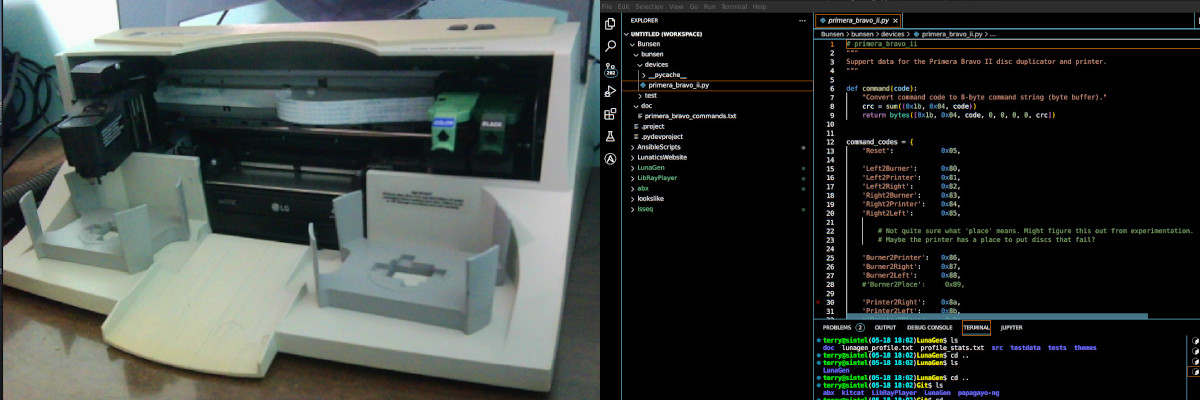
I have not done a lot of videography, and I would probably need to upgrade to better cameras and microphones to do live video production. We’ve done a few amateur projects, but I fear the quality of cameras and microphones (cell phones, iPad, built-in mics, a head-mounted sports camera, etc) we’ve used has let us down. I feel more confident about title design and logo animations. Those are pretty basic stuff to do with Blender, Inkscape, Kdenlive, and so on. More complex animations could be possible, but I’d have to see what sorts of animations are in demand versus what I can provide.
I do not include software development here: I’ve done that a few times on contract, and I’ve regretted it almost every time. It’s too far on the edge of my skillsets, so I can’t make realistic projections of project costs and schedules, and that leads to unhappy clients.
Retail Storefront
If we create a self-hosted storefront for Lunatics Project and/or Film Freedom, we can open up access to it to other creators. This might take the form of charging a listing fee or a per-sale commission from a storefront we set up. This is basically getting into the internet retail sales business. I’m a little hesitant to go in this direction, because I have almost no experience or expertise, and I know there’s a lot to learn. I may also not have the best temperament for a long-running customer service role.
Still, I do see that there is strength in numbers. If we had a community storefront with many creators represented, it would be a more-interesting, stickier web site for people to visit. We’d most likely all get better sales than from running individual web stores.
And such a project might form the basis of a project to create a federated storefront that might involve more communities. One software I’m very interested in testing out is Flohmarkt, which is a federated advertising service. This might be a good thing to connect with, and there is a YunoHost app for it.
Virtual Studio Project Hosting Service
The most direct way to earn from the effort I’ve put into setting up the Virtual Studio, would be simply to rent access to other project creators. Setting up the site involved a rankly ruinous investment of my time and money to do — I had to be extremely motivated and highly privileged to have the security to spend my resources on that, and highly skilled and confident to put it together. That’s a lot of barrier to entry, and most likely there are many creators who simply can’t afford to build this for themselves. So, instead, they are choosing among the available ready-made platform options for their projects. Most are highly-proprietary and exploitative. Many will actively harm the creators’ chances of finding an audience (any platform that algorithmically promotes some creators suppresses others by the same act).
So an obvious and pretty low-risk option is to set up hosting plans based on the Virtual Studio.
I have a rough idea of what options might be offered:
- A free tier for tiny projects or trials.
- A modestly-priced tier for main expected projects.
- A more costly tier for big projects, similar to Lunatics Project.
- A discount for projects which will be released under an approved free license (CC-0, CC By, CC By-SA, GPL, other OSI/FSF/DFSG-approved licenses).
- Additional services for project contributors.
- Add-ons for store listings, backup/archive services, etc.
This involves a basic two-tier customer base: the primary revenue would be from project leaders or projects collectively, and then there would be mostly complementary memberships to those projects’ contributors. This reflects the fact that most creative projects will be teams, with their own internal organization. It’s important that projects can offer contributors the ability to use the platform to work on their projects, and we’d need to make that as streamlined as possible.
New Business-Specific Expenses
I started out by analyzing the substantial sunk costs I’m already committed to, because an important point in evaluating these options is that much of the cost of doing these things is already covered or will be covered when we migrate to our new platform.
However, there will be specific costs associated with each proposed revenue stream, and they have different characters. In general, we can divide the costs into three important categories, based on when they apply:
- Fixed investments (of time or money to make the product available).
- Scalable costs (costs that go up with the capacity I’m providing).
- Cost Of Goods Sold (or Services Provided) incurred per sale.
Additionally, each of these may be a labor cost or a capital cost.
Business Lines
So let’s revisit each of the revenue ideas with how their costs play out:
Subscriptions, Donations, etc.
- Regular labor costs of promoting to gain subscribers and reporting to keep them.
Release Distribution and Ancillary Merchandise
- Development labor to design them.
- Promotion/marketing costs.
- Printing or manufacturing costs.
Each merch item is its own little production project, with associated market risk, production cost, and sales revenue.
Meta Merchandise
Meta projects (projects about the project) have essentially the same scaling factor as regular ancillary merchandise, they just appeal to a different market.
Design and Production Services
- Only promotional costs up-front (might have to produce a portfolio or reel).
- Labor and cash expenses associated with each production, after being contracted. These would generally be passed on to the customer (the exception being equipment expenses that can be reused for additional clients).
The usual practice with commission work is that costs are simply tacked onto the client’s bill, along with the billable hours of work. There is very little if any “passive” income here: each project will require new expenses of time and money to complete.
Retail Storefront
Once our self-hosted storefront is up, we’ll have maintenance expenses associated with it:
- Fixed site maintenance costs.
- Moderation and seller support.
- Payment processor integration.
- Fulfillment services: packing and shipping physical products, download servers for digital.
Actual income would be essentially passive, as long as the site keeps running. This seems fairly low-impact in terms of support, but could be challenging to get enough interest to make it profitable.
Project Hosting
- Development work to ensure multi-user capacity. WordPress might need to be set up in a multiuser configuration, for example.
- Development and testing of any apps beyond what we use on Lunatics Project (e.g. Ghost, Funkwhale, WriteFreely, Redmine, etc).
- Fixed site maintenance costs (mostly sunk).
- Scalable moderation costs, particularly for forums. The more people to manage, the bigger the cost.
- Scalable capacity costs: CPU, RAM, HDD storage space (might have to buy additional hard drives).
- Service time/costs for additional extras such as burning project archive disks.
There is an upper limit to how much project hosting we can provide on a single server, and I’m not sure I want to scale beyond that. Also, offering additional services beyond what we need for ourselves introduces additional ongoing costs.
Synergy & Promotion
In reality, we would probably combine these plans and try to get each to promote the others. In addition, we would produce some content primarily to promote the others:
- Monthly magazine/showcase of hosted projects (“staff picks”).
- Tutorials for free software tools.
- Interviews or panels on free-culture news and views.
- These would include integrated promotion for hosting services, merch shop (if any).
- Promoting site hosting and production services on my social media (Misskey, Mastodon)
- Additional social media promotion on Bluesky, Threads, Facebook, etc.
These would, of course, involve some production costs in effort if not so much in cash. But that’s also a good opportunity to keep in practice for production services work.
New-Business Revenue Streams
Hosting
Project hosting of multimedia projects.
Freemium model:
- Starter package free to all.
- Basic FC/FOSS package for free-licensed productions (CC-0, CC-By, CC By-SA).
- Basic package otherwise subscription-based.
- Full package subscription based for all, with discount for FC/FOSS projects.
The nice advantage to this is that subscriptions are fairly reliable income once a modest number of subscribers have joined. Since this is basically a pragmatic payment for services rendered, this doesn’t represent a large market risk. We just need to find people who want these services and would rather pay for them than maintain them themselves.
Storefront
Combined media & merch store for all projects on the site. The idea is to get more attention by carrying more variety.
- Surcharge for sales through the store (overhead).
- Alternatively, listing subscription fees?
These are also a basic service for subscription (or commission) basis.
Publishing & Production Services
Sales (through store?) of basic services we can provide, would charge on a contract or commission basis. So that’s a fairly direct revenue, albeit not as predictable.
We could go so far as to create a traditional publishing house, which would invest in particular creators. But that would seem to be something to try after working on a service basis for “self-publishing”.
Synergy Aspect
Each of the above lines would have some effect of boosting the others, as well as bringing more attention to the merch sales model, assuming it’s in the same storefront.
Roll Out Plans
Finally, of course, there is the problem of priorities: how can I use my own limited time and effort to make this happen?
I think it all has to start with finishing the old business: get the “Lunatics!” pilot episode finished. Then I would need to set up at least the test platform for sales (storefront and marketplace connections to promote it). Once that is working, I would need to tackle the IT challenges involved in moving to colocation of the server (installing the operating system on the server hardware and setting up a VPN connection for server management). And then I’d need to handle the legal and business arrangements for opening the platform up to subscribers and marketing that.
